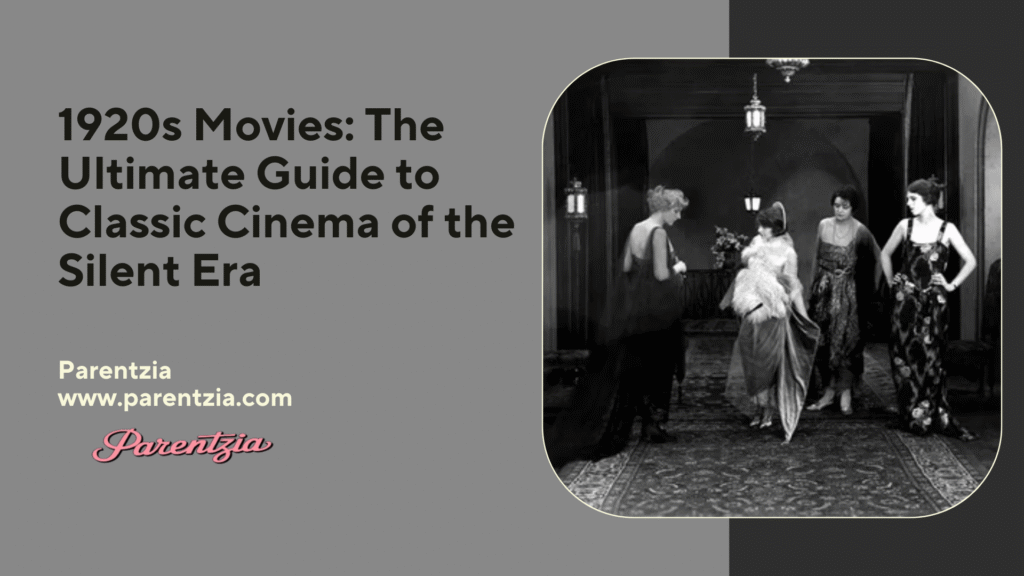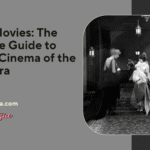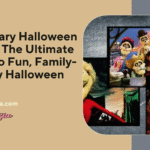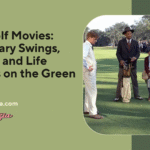The 1920s were a transformative decade in film history. Silent films dominated the decade, laying the groundwork for modern cinema and shaping the way stories were told on screen. From the quirky antics of Charlie Chaplin films to the dramatic expressionism of German cinema, the 1920s offered audiences classic black-and-white storytelling that still captivates film lovers today. This era is often called the Golden Age of silent film, a time when filmmakers experimented boldly with visuals, narrative, and special effects, creating vintage movies 1920s audiences still celebrate nearly a century later.
Whether you’re a cinephile, a history buff, or just discovering early Hollywood movies, this guide to the best films of the 1920s will take you through iconic performances, pioneering techniques, and unforgettable stories that define classic 1920s cinema.
The Silent Era: Hollywood’s Golden Experiment
The silent film era was more than just a stepping stone to talkies—it was a period of immense creativity. Filmmakers relied on expressive visuals, stories told through visuals and title cards, and innovative camera techniques of the era to convey emotion, plot, and humor. The lack of spoken dialogue forced actors to exaggerate expressions and gestures, resulting in iconic performances without dialogue that still resonate.
Hollywood began rising as the center of global film production, with studios like Paramount, MGM, and Warner Bros. building the foundation of what would become the Hollywood Golden Age. The decade also saw the emergence of legendary silent film actors who would define a generation.
Notable Hollywood Silent Films
- The Gold Rush (1925) – Charlie Chaplin’s masterpiece, featuring unforgettable scenes like the dinner roll on forks. It’s a prime example of physical comedy at its peak.
- The General (1927) – Buster Keaton movies showcase his extraordinary stunt work and meticulous timing. This film remains a benchmark for slapstick comedy films.
- Sherlock Jr. (1924) – Innovative for its special effects and meta-narrative, illustrating groundbreaking cinematic experiments.
- The Crowd (1928) – A social realist film that showed how urban life shaped personal identity, an early example of classic black-and-white storytelling.
- Safety Last! (1923) – Famous for the iconic clock tower scene, highlighting the art of physical comedy at its peak.
Table: Notable Silent Hollywood Films of the 1920s
| Film | Year | Director | Significance |
| The Gold Rush | 1925 | Charlie Chaplin | Comedy masterpiece, inventive gags |
| The General | 1927 | Buster Keaton | Stunt work, technical innovation |
| Sherlock Jr. | 1924 | Buster Keaton | Visual effects and narrative play |
| Safety Last! | 1923 | Fred C. Newmeyer | Famous clock tower sequence |
| The Crowd | 1928 | King Vidor | Realistic depiction of urban life |
These films illustrate how early filmmakers shaped modern cinema. They experimented with timing, framing, and narrative in ways that would influence decades of filmmaking.
German Expressionism: Shadows and Style
While Hollywood dominated, German Expressionism was revolutionizing cinema in Europe. Emerging after World War I, this style emphasized dramatic expressionism defined visual style, with exaggerated shadows, angular sets, and psychologically charged performances. Films often explored horror, madness, and societal anxiety.
Key German Expressionist Films
- Das Cabinet des Dr. Caligari (1920) – Famous for its warped sets and twisted narrative, influencing horror and noir for decades.
- Nosferatu (1922) – F.W. Murnau’s vampire classic, a landmark in film noir origins.
- Metropolis (1927) – Fritz Lang’s futuristic epic featuring monumental sets, early special effects, and pioneering cinematography.
- The Last Laugh (1924) – Innovative camera work with minimal intertitles, emphasizing storytelling through visuals.
Example: The distorted, angular sets in Caligari created unease in viewers, a technique that would echo in modern horror films.
Avant-Garde and Experimental Cinema
The 1920s were also a time of bold experimentation. European filmmakers and Japanese directors pushed the boundaries of narrative, form, and visual expression. These films often eschewed linear storytelling for surreal imagery or psychological exploration.
Notable Avant-Garde Films
- Un Chien Andalou (1929) – Buñuel and Dalí’s surrealist film, shocking audiences with dreamlike sequences and unconventional editing.
- A Page of Madness (1926) – Japanese silent film exploring mental illness, a masterclass in visual storytelling.
- The Man Who Laughs (1928) – Gothic and tragic, showcasing classic romance films with dark undertones.
These works represent the era’s groundbreaking cinematic experiments, influencing future generations of filmmakers in avant-garde, horror, and narrative cinema.
Epic and Historical Films
The 1920s also saw the rise of grand-scale epics and historical storytelling. These films displayed technical innovation, lavish production design, and dramatic performances.
Key Epic Films
- Ben-Hur: A Tale of the Christ (1925) – Famous for its chariot race, a spectacular feat of early Hollywood.
- Napoleon (1927) – Abel Gance’s French epic, notable for triple-screen projections and camera movement innovations.
- The Big Parade (1925) – A war drama reflecting the grim reality of WWI, showcasing classic black-and-white storytelling.
Table: Major Epics and Historical Films of the 1920s
| Film | Year | Country | Genre | Notable Feature |
| Ben-Hur | 1925 | USA | Epic | Chariot race spectacle |
| Napoleon | 1927 | France | Historical | Innovative camera techniques |
| The Big Parade | 1925 | USA | War Drama | Realistic depiction of WWI |
These films demonstrated that cinema could be both entertaining and culturally significant, cementing cinema as a new form of mass entertainment.
Comedies and Slapstick
Slapstick comedy films were incredibly popular during the 1920s, driven by physical gags, clever timing, and social satire. They relied heavily on visual humor, as dialogue was absent.
Iconic Comedy Films
- Mighty Like a Moose (1926) – A silent short classic blending absurdity with sharp observation.
- Battling Butler (1926) – Mistaken identity and playful physical humor.
- Seven Chances (1925) – Chaplin’s slapstick genius in full swing.
- Our Hospitality (1923) – Combines humor with suspense, showing how early filmmakers used visuals to tell complex stories.
The Golden Age of silent film saw comedians like Charlie Chaplin, Buster Keaton, and Harold Lloyd dominate screens worldwide. Their work is still studied in film schools for its mastery of timing, visual gags, and expressive acting.
Innovations in Cinematography and Technique
The 1920s were a decade of pioneering filmmaking techniques. Cinematographers and directors experimented with early special effects, moving cameras, and creative montage sequences.
Key Innovations
- The Man with a Movie Camera (1929) – Soviet montage masterpiece, capturing urban life in unprecedented ways.
- The Lodger: A Story of London Fog (1927) – Alfred Hitchcock’s suspense techniques foreshadowed modern thrillers.
- The Fall of the House of Usher (1928) – Atmospheric visuals and set design, shaping gothic horror aesthetics.
Diagram: Timeline of 1920s Cinematic Innovations
- 1920: Expressionist sets in Caligari
- 1922: Special lighting and shadows in Nosferatu
- 1925: Chaplin integrates gags with narrative in The Gold Rush
- 1927: Moving camera and suspense techniques in The Lodger
- 1929: Soviet montage perfected in The Man with a Movie Camera
These breakthroughs show how early filmmakers shaped modern cinema, influencing narrative, visual, and technical aspects of filmmaking.
International Cinema Highlights
The 1920s weren’t just about Hollywood. Around the globe, filmmakers experimented with style, story, and form.
- Gösta Berlings saga (Sweden, 1924) – Greta Garbo’s debut, blending romance and drama.
- Norrtullsligan (Sweden, 1923) – Social satire highlighting class issues.
- Zvenigora (USSR, 1928) – Soviet montage and symbolic storytelling.
- H2O (France, 1929) – Avant-garde water-themed experimentation.
These films show how classic 1920s cinema thrived across borders, influencing global storytelling and design.
Horror and Gothic Cinema
Horror in the 1920s combined expressionist aesthetics and dramatic narratives, forming the roots of film noir origins and modern horror.
- Nosferatu (1922) – Vampire mythos and shadow play.
- The Cabinet of Dr. Caligari (1920) – Twisted sets and psychological tension.
- Die Büchse der Pandora (Pandora’s Box, 1929) – Tragic melodrama with morally complex characters.
Critics often note how these films employed innovative camera techniques of the era, creating suspense and dread without spoken words.
Legacy and Influence of 1920s Cinema
The 1920s were a launching pad for techniques, genres, and stars that defined modern cinema. Directors, actors, and studios experimented with early special effects, editing, and camera movement. Silent films proved that stories told through visuals and title cards could rival the power of spoken dialogue.
Enduring Contributions:
- Birth of slapstick comedy films and classic romance films.
- Advancement of early animation films and movie serials.
- Development of film noir origins through German Expressionism.
- Cultivation of iconic silent film stars and legendary silent film actors.
- Foundation for Hollywood rising as the center of film.
These films also influenced global cinema, laying groundwork for genres, visual storytelling, and acting techniques still used today.
Conclusion
The 1920s were a revolutionary decade in 1920s film history. Silent era movies like The Gold Rush, Metropolis, and Nosferatu showcased classic black-and-white storytelling, groundbreaking techniques, and iconic performances without dialogue. From Hollywood’s slapstick comedies to German Expressionist horrors, this era established cinema as a major cultural force. Exploring these vintage movies 1920s offers not just entertainment but insight into how early filmmakers shaped modern cinema.
Whether you’re discovering early Hollywood movies, studying classic 1920s cinema, or revisiting black and white silent dramas, the films of the 1920s remain timeless treasures. They remind us that cinema is more than words—it’s movement, emotion, and imagination brought to life on screen.

Tina Grey is an experienced blogger with a passion for uncovering the best in film. With years of writing and a keen eye for detail, Tina brings insightful reviews and engaging content to Parentzia. Her deep love for movies, combined with her expertise, helps readers discover must-watch films across genres. When she’s not reviewing, Tina enjoys exploring new cinematic trends and sharing her love of film with her audience.







